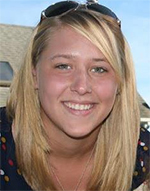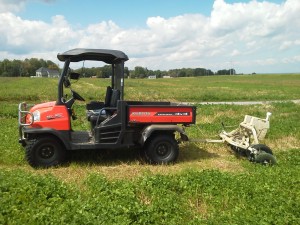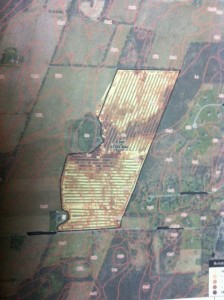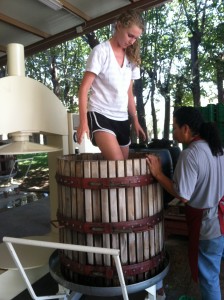 My name is Kaitlyn Anderson. Today was my first real day as a Cornell Cooperative Extension intern inventorying invasive species. After a few weeks of getting my paperwork together as fast as I could, I went through a brief orientation with my supervisor, Laurel Gailor, yesterday, and today I was able to go out into the field with her and meet some of the local farmers of Saratoga County. We traveled to a number of orchards, learning about farmers’ main weed problems and concerns. I learned to use the equipment (GPS and data sheets) and methods for recording my findings. It was a productive day making local farmer connections, getting permission to use their fields, and orienting myself with the area.
My name is Kaitlyn Anderson. Today was my first real day as a Cornell Cooperative Extension intern inventorying invasive species. After a few weeks of getting my paperwork together as fast as I could, I went through a brief orientation with my supervisor, Laurel Gailor, yesterday, and today I was able to go out into the field with her and meet some of the local farmers of Saratoga County. We traveled to a number of orchards, learning about farmers’ main weed problems and concerns. I learned to use the equipment (GPS and data sheets) and methods for recording my findings. It was a productive day making local farmer connections, getting permission to use their fields, and orienting myself with the area.
I am looking forward to learning a lot, very quickly. I do not have any experience working with weeds or how to even identify what would be an invasive weed species. I am getting to know the Extension staff and am looking forward to a beautiful summer in Saratoga County.























